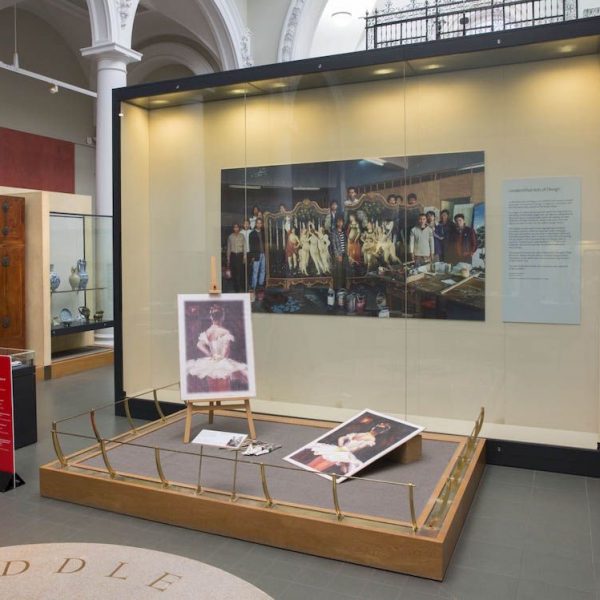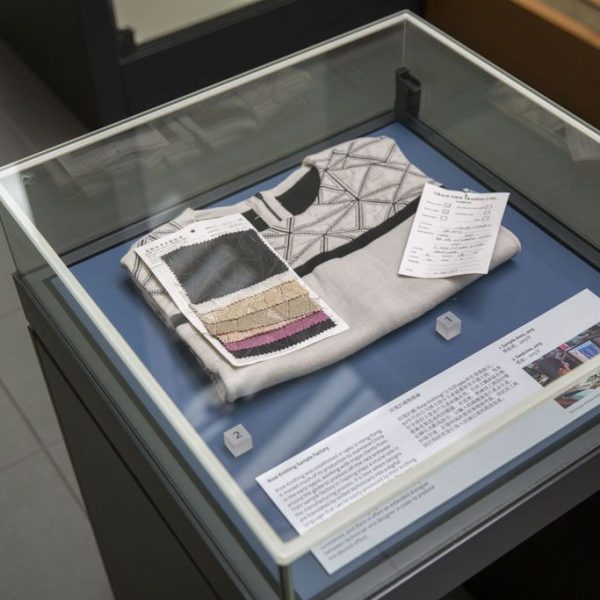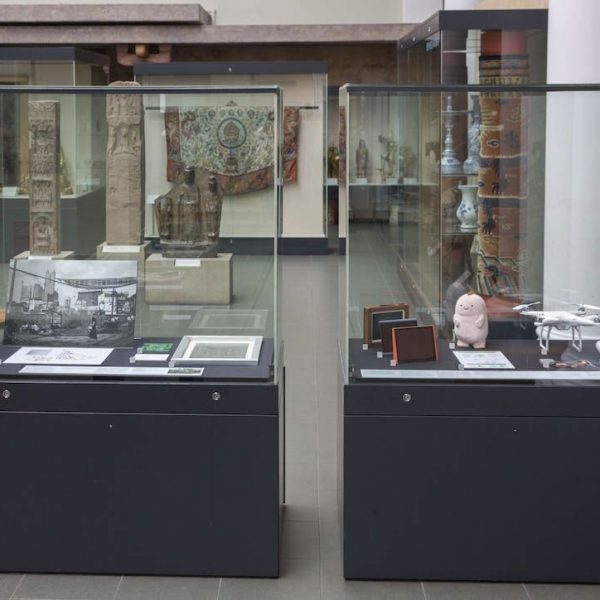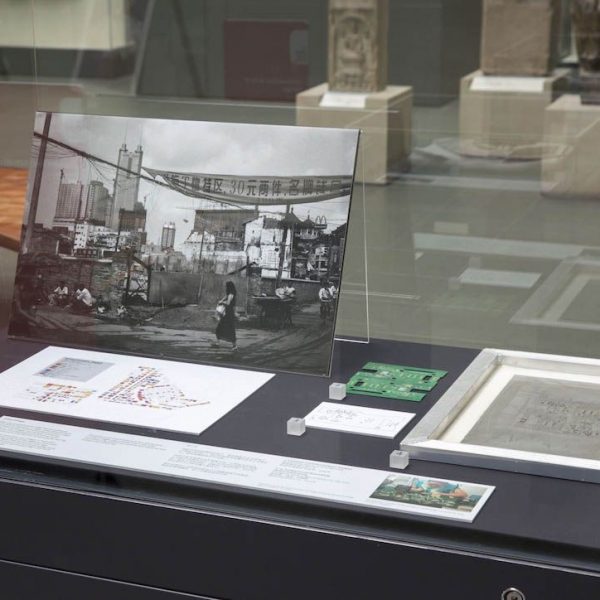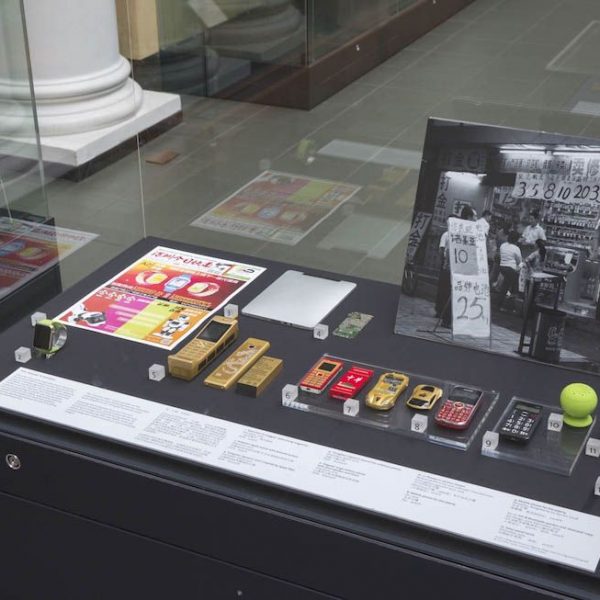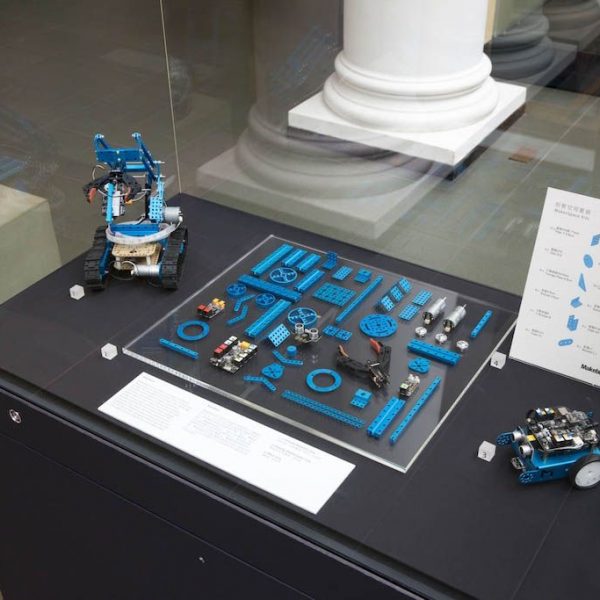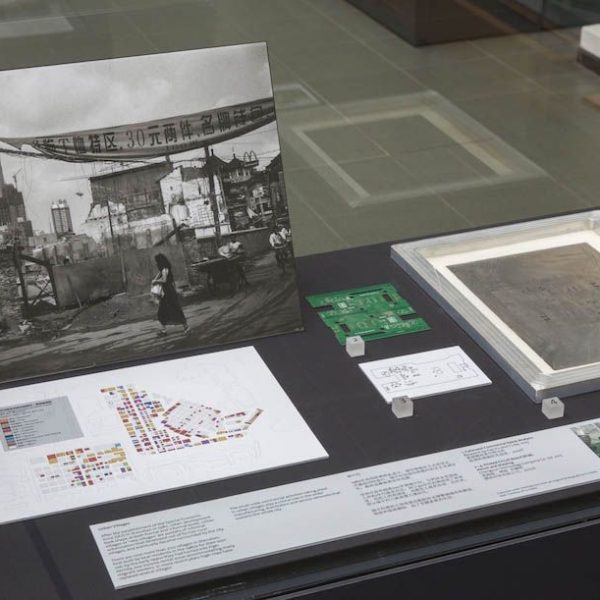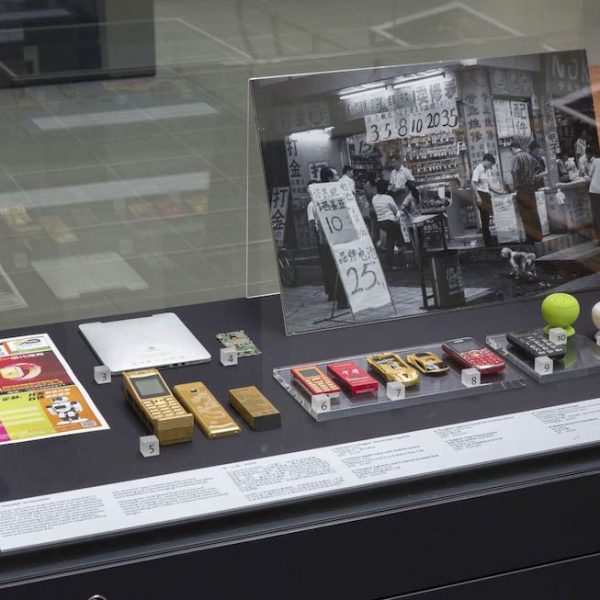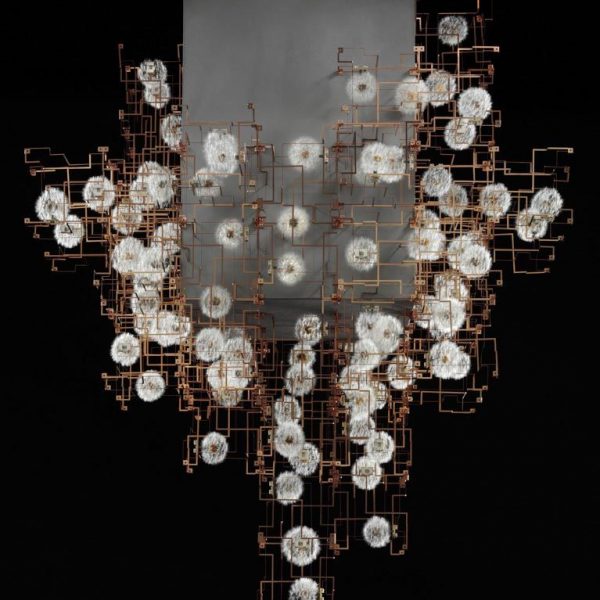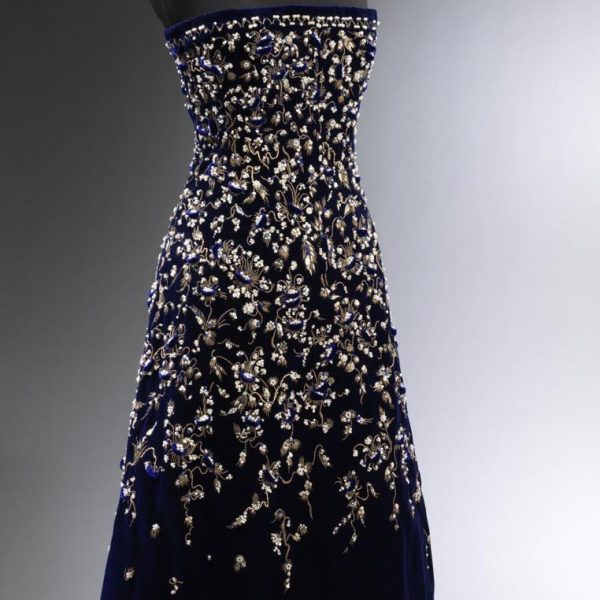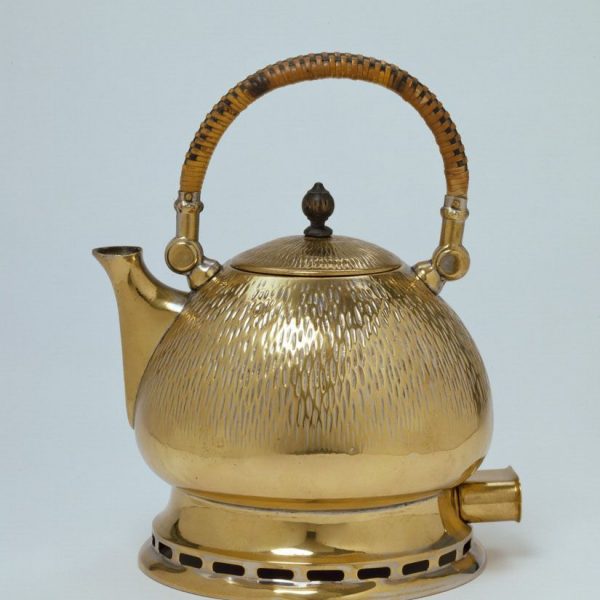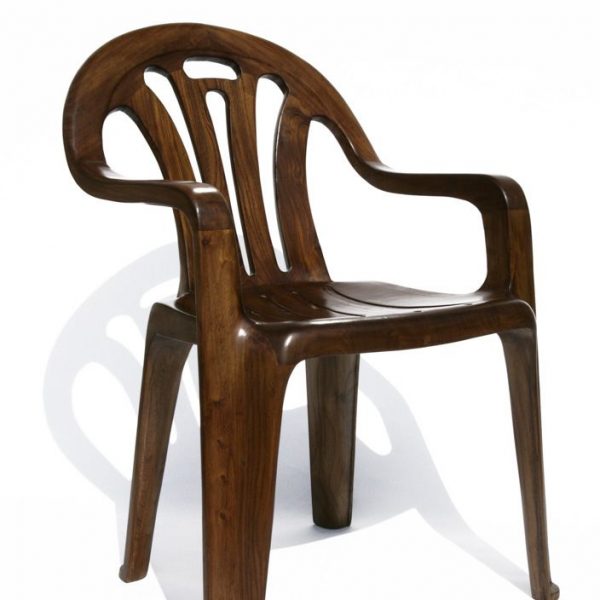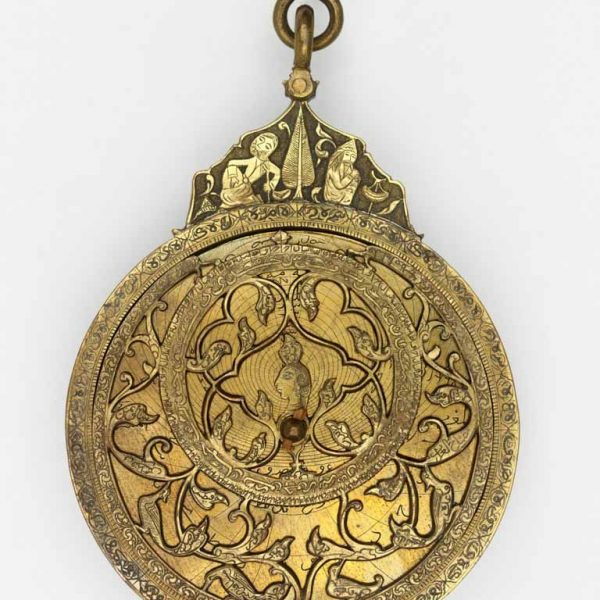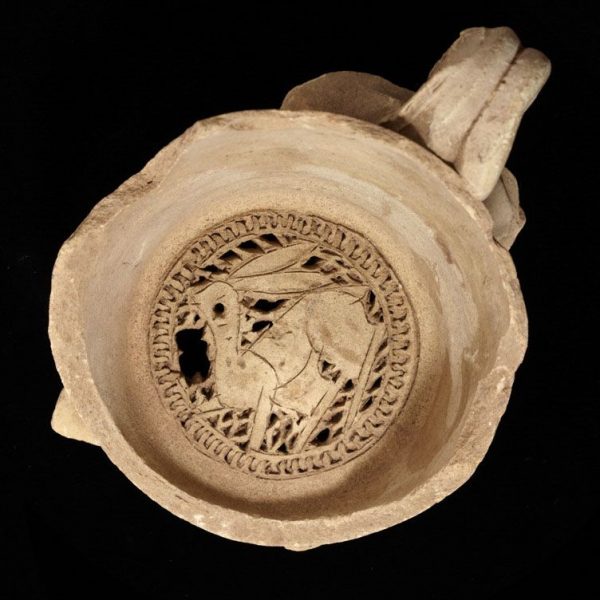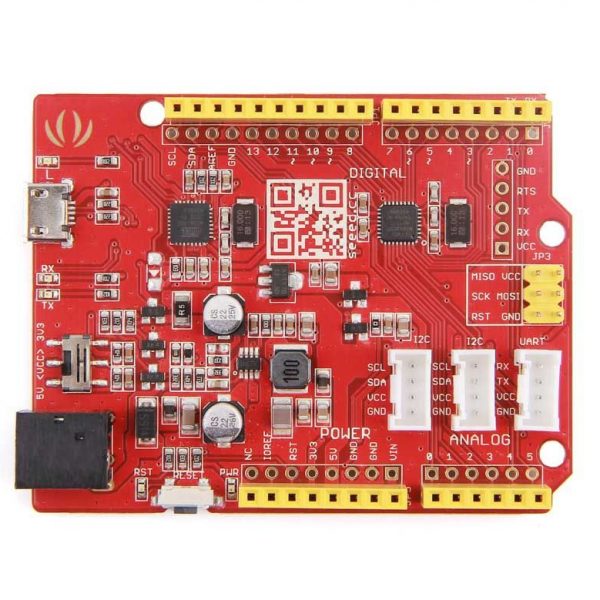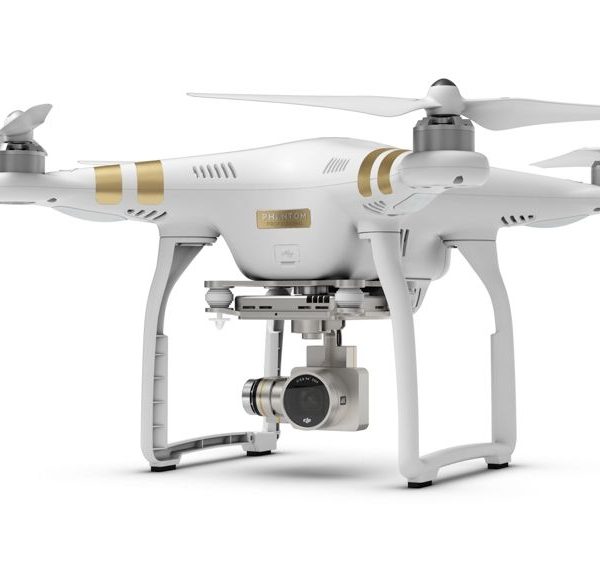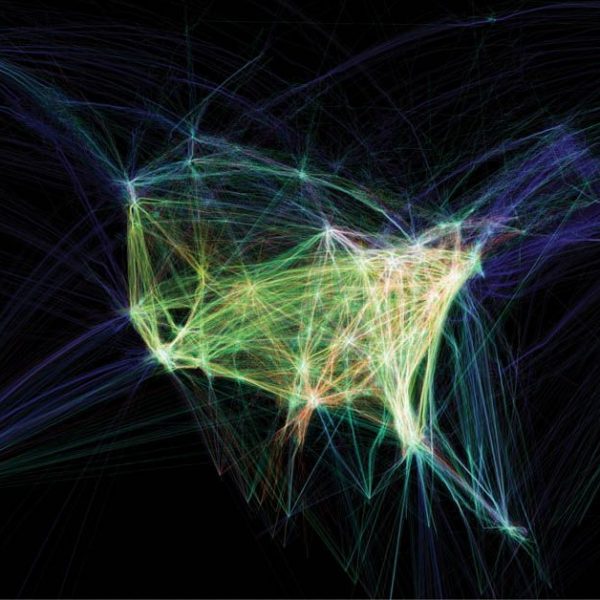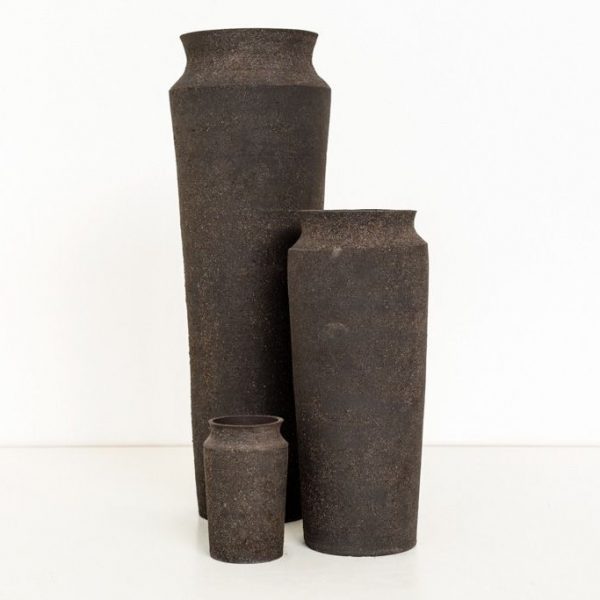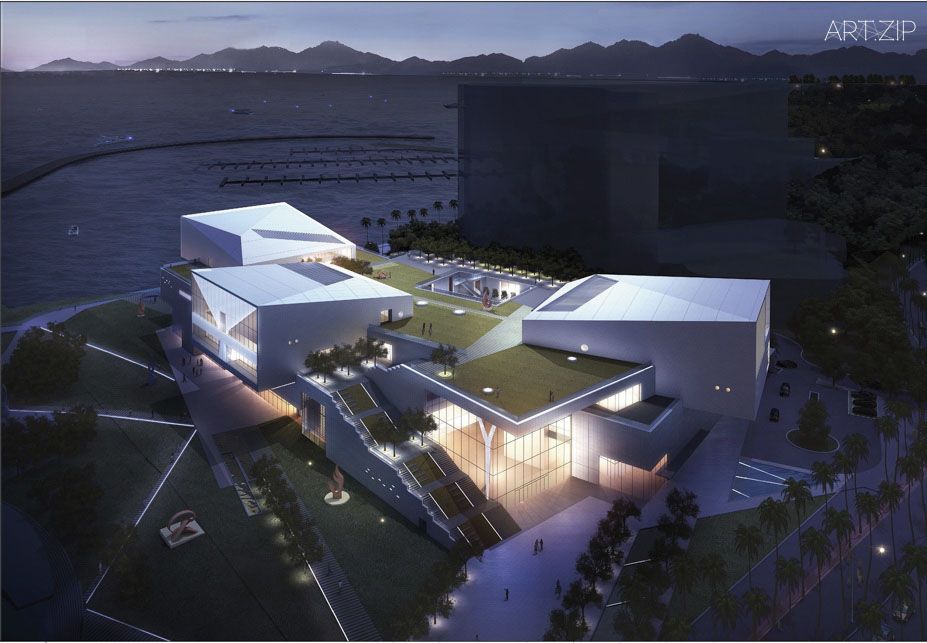
Interview with Tim Reeve, Deputy Director of the V&A
專訪V&A副館長蒂姆·里夫
.
Interviewed and text by x 採訪及撰文 Li Bowen 李博文
Edited by x 編輯 Michelle Yu 余小悅 Nicolas Anderson 尼古拉斯·安德森
.
China Merchants Shekou Holdings (CMSK), in association with founding partner the Victoria and Albert Museum (V&A), has announced the brand—DESIGN SOCIETY 「设计互联」— a new cultural hub that will be located in the Shekou Sea World Culture and Arts Center. DESIGN SOCIETY will comprise a design museum, within which the V&A Gallery will be located, a theatre, a multi-purpose hall, Shenzhen Guanfu Museum, and a learning and public event programme.
Tim Reeve, Deputy Director and Chief Operating Officer of the V&A, spoke to ART.ZIP about the collaboration.
中國招商蛇口與英國國立維多利亞與阿爾伯特博物館(Victoria & Albert Museum) 共同創辦了全新的文化中心「設計互聯」,將座落於2017年建成的蛇口海上世界文化藝術中心。「設計互聯」文化中心將由設計博物館、劇院、多功能展廳、深圳觀復博物館以及學習與公共項目部組成,而即將落成的設計博物館內亦會成立特別的V&A展廳。
V&A的副館長及首席運營官蒂姆·里夫(Tim Reeve)為我們講述了更多的合作細節。
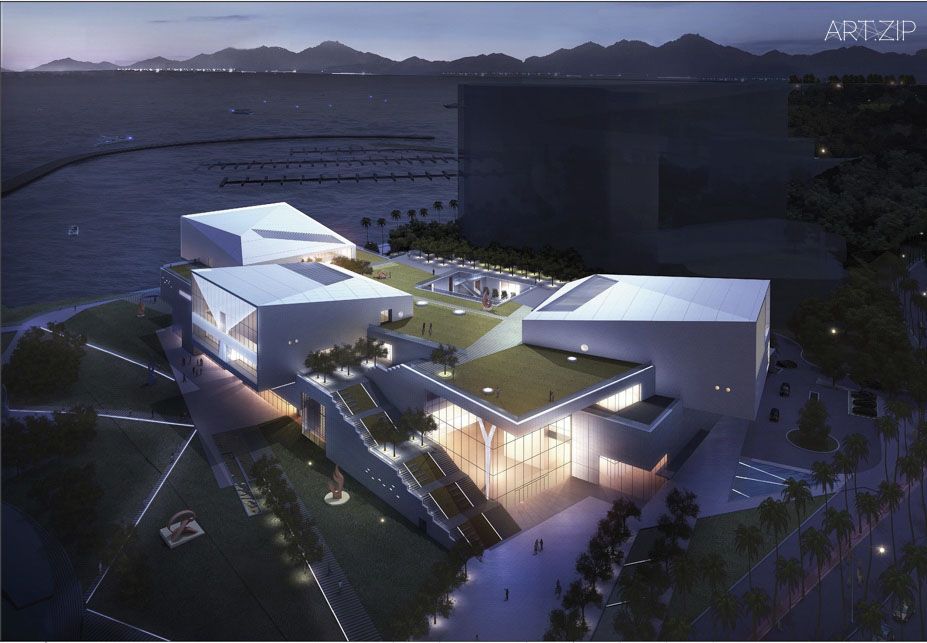
Design Society rendering.© Maki and associates
ART.ZIP: How would you describe your relationship between the V&A museum and the Sea World Arts and Culture Centre?
TR: It feels to me like a real partnership, of course, there is a contractual and formal basis to it, but it feels over the last four years that we have grown up with our colleagues at China Merchants Group (CMG) and spent a lot of time getting to know each other both in London and there. It feels like a genuine collaboration.
ART.ZIP: 在您看來,V&A與“設計互聯”的合作關係是什麼樣的呢?
TR: 我想這是一種真正的合作夥伴關係,當然,這種合作關係是有著協議性及形式性的基礎的。近四年來我們與招商局和招商蛇口的夥伴們共同成長,在兩地機構合作的過程中增進了對彼此的了解。我認為這是一個誠摯的合作過程。
ART.ZIP: From the press release it seems that the V&A is on the giving side and Shenzhen is on the receiving side, is that a fair way to put it?
TR: I wouldn’t describe it that way. Certainly, we were invited to become involved, as we have a certain amount of knowledge and experience of museums, of collecting and of presenting collections to the public, and obviously we are a design museum, but it feels like much more of an equal relationship. I feel like we are learning as an institution, we are learning from China Merchants as much as they are learning from us. One of the exciting things of being involved in this collaboration is that it is not a traditional museum-to-museum collaboration. It is a different business culture, and I think we are learning from that in a very positive way. When you talk about museology and get down to museum and gallery concepts, we are the provider or the developer of content, but we are doing that also in collaboration. We have spent a great deal of time over the past four years getting to know the local community and the local design community because that is how we will put together a really great V&A gallery. We want it to respond to something that is already here, rather than something that simply lands from London in Shenzhen, so I don’t think it is giving and receiving, it feels like a much more two-way process to me.
ART.ZIP: 從目前發布的消息來看,似乎V&A偏重給予,而「設計互聯」以及海上世界文化藝術中心偏重於全盤接受。這種印象是正確的嗎?
TR: 我不這樣看待我們的合作關係。當然,V&A作為專業的設計博物館被邀請參與到項目中來,因為我們在收藏以及公共展覽方面有著豐富的經驗以及專業知識。但是我們與「設計互聯」的合作關係是平等的,在這次合作的過程中我們互相學習。這個項目讓人興奮的地方在於,這並不是一次傳統的館際合作。這次合作有著一種不同的商業文化,而我認為我們從中學到了許多積極的內容。有關博術館學或博術館、展館運營理念的方面,V&A是內容提供方或開發方,同時也有共同合作的部分。我們在過去四年來投入了許多時間來了解當地人群、當地設計環境等,因為這對於打造成功的V&A展館是十分必要的。我們希望這個V&A展館能夠與當地文化產生互動的,而不是簡單地從倫敦向深圳輸出或搬運什麽內容。所以,我不認為這是單向的給予和接受過程,我們的合作是雙向的。
ART.ZIP: What do you mean by a traditional museum-to-museum collaboration?
TR: Typically this is loaning work from one to another, between two very established museums. Most of those relationships are very well honed, lots of give and take, and it’s part of global museum culture that you give a loan if you can, you don’t say no unless you really have to. This is different because the museum doesn’t yet exist, it is still an idea.
ART.ZIP: 您剛才提到了傳統的館際合作,那是怎樣的一種合作呢?
TR: 一般來說主要是兩家非常成熟的博物館為了展覽互相借調藏品的合作關係。此種關係大多都是反復協商的結果,博物館之間頻繁地交換資源,這也是全球博物館文化的重要一環。一般來說,除非逼不得已,你一定不會對其他博物館的借展要求說“不”。但這次V&A與「設計互聯」的合作則不一樣,我們共同合作打造的是一個新型文化綜合機構的平台與品牌。
ART.ZIP: For the V&A museum this is the first of this kind, a new intimate museum collaboration. Correct?
TR: I think that it is the very first one of this kind and the relationship between CMG and the state is slightly different to what it might be in the UK, but it feels like a public sector cultural institution in the UK doing business with a Chinese commercial company. That is very interesting for us, because increasingly museums in the UK and in Europe have to run themselves in a more business-like way. The culture, or the long term plan, is not so dissimilar between a museum and a business. Obviously, working museums are not always known to be the fastest moving of institutions, so working with a business that is more fleet of foot is a nice exercise to be involved in. The other thing that is distinctive, is that it is a relatively short collaboration, initially of five years. It will be intensive and hopefully both sides will get a great deal out of it in a short period of time. It is distinct from the Guggenheim model, where the collaboration is defined in bricks and mortar with a new museum being constructed and branded by a well-known American or UK institution. We like the fact that this is quite dynamic, it might extend, but if it doesn’t, it is a very short sharp collaboration. I think there is less risk involved for both sides but at the same time, you can get an impact much more quickly, you aren’t waiting for the museum to open its doors in five years’ time. The process leading up to the museum opening is almost as important as what happens after the doors open to the public. It is a pilot for us, a trial for us, so far it has been a great experience and we look forward to seeing how the next couple of years go.
ART.ZIP: 所以這是V&A第一次進行如此深度的館際合作?
TR: 我想是的,這是V&A第一次與招商蛇口及政府進行此類合作,而這種合作方式肯定與英國常見的合作方式不同。這次合作看起來像是一個英國公共文化部門與一家中國商業公司在進行合作。這是非常有趣的事情,因為越來越多的英國及歐洲博物館機構需要以一種更為商業的方式進行管理及運營。博物館運營在商業文化基礎及長期規劃上其實與企業經營並沒有太大區別。顯然地,博物館機構並不是以其運作速度著稱的,因此與一家商業機構合作是一種有益的實踐。此次合作吸引我們的另一個重要原因是:合作時長是相對短暫的,計劃中第一階段的合作時間僅為五年。因此,我們需要在短暫的合作時間內進行密集的合作,並希望合作雙方都能夠有所得益。這與所謂的古根海姆(Guggenheim)模式不同,采取這種模式的英美博物館在合作時會建立新的、長期運營的實體博物館,並選擇彰顯自己的文化品牌。而我們選擇的合作方式則不一樣,因為這是動態的,我們有可能會延長合作時間,但就算我們不選擇延長合作關係,這也將是一次短暫而高質的合作過程。我想,這種安排也為合作雙方減少了風險。你可以在很短的時間內帶來影響,而不是白白等著博物館在五年後正式建成。而博物館建成前進行的工作幾乎和正式開館後的工作同樣重要。這次合作對於我們來說是一次試驗。目前為止,這是一次了不起的經驗,我們也非常期待接下來幾年內的發展。
博物館運營與商業行為的文化及長期計劃事實上並不相差太遠。顯然地,博物館機構並不是以其運作速度著稱的,因此與一家商業機構合作是一種有益的實踐。此次合作吸引我們的另一個重要層面是:合作時長是相對短暫的,計劃中第一階段的合作時間僅為五年。因此,我們需要在短暫的合作時間內進行密集性合作,並希望合作雙方都能夠有所得益。這與所謂的古根海姆模式不同,采取這種模式的英美博物館在合作時建立新的、長期運營的實體博物館,並選擇彰顯自己的文化品牌。我們選擇的合作方式則不一樣,因為這是動態的,我們有可能會延長這種合作,但就算我們不選擇延長合作關係,這也將是一次短暫而高質量的合作過程。我想,這種安排也為合作雙方減少了風險。你可以在很短的時間內帶來影響,而不是白白等著博物館在五年後正式建成。博物館建成前進行的工作幾乎和正式開館後的工作同樣重要。這次合作對於我們來說是一次試驗。目前為止,這是一次了不起的經驗,我們也非常期待接下來幾年的發展。
ART.ZIP: Is it possible that after five years, both parties will choose to continue?
TR: Yes I think it is perfectly possible, if we feel there is more to do, if there are new opportunities to explore, we are definitely open to that. But if everything we set out to achieve, and everything China Merchants set out to achieve, has been achieved, then that is okay too.
ART.ZIP: 五年後合作雙方選擇繼續合作的機會大嗎?
TR: 我覺得這是非常可能的事情。如果我們覺得仍然有可合作的計劃,有可發掘的新機遇,我們一定會對繼續合作保持開放態度。但如果屆時我們完成了任務,招商蛇口完成了他們的任務,那也是不錯。
ART.ZIP: What took so long to come up with this sort of collaboration?
TR: That is an interesting question, I don’t know, I think museums historically, maybe museum directors, maybe museum culture, have been about big concrete structures and collections. They have defined overseas activity in quite a traditional and quite a binary way. I think that the way that museums are funded and how they have to be more competitive, more responsive, and are having to be more business-like has almost forced, or has provided, the conditions for this sort of collaboration. It seems like much more of a fluid model to me, it seems much more appropriate to me. At the moment you either invest in a loan or exhibition that goes from X museum to Y museum, or you invest for a hundred years, but nothing in between. The great thing for us is that you are putting down roots to an extent, but it is time limited and I think it is a nice counterpoint between the two.
ART.ZIP: 為什麽V&A會現在才開始此類國際範圍的緊密館際合作?
TR: 這是一個非常有趣的問題,我並不太清楚其中的緣由,但我想,從過往的歷史來看,博物館館長或博物館文化一直傾向於關注大型實體結構及大型收藏等方面。這些博物館館長以相對傳統、二元論的方式來定義在海外進行的計劃,而我認為,博物館資金來源結構的轉變、愈加激烈的競爭環境、對公眾日益增長的的關注及更加商業化的運作模式迫使博物館必須進行這種合作,或者說,這些轉變為這樣的合作提供了機會。在我看來,這催生了一種流動性更強的運作模式,這是非常適合博物館的。今天,你要麽為從X博物館向Y博物館借出的一件藏品進行投資,要麽為百年基業進行投資,在這兩者之間沒有折中的選擇。而我們目前的合作則是在一個限定時間內為未來打下基礎,我覺得這是兩個極端之間另一個有意義的解決方案。
ART.ZIP: Other museums like the Tate, MoMA or Centre Pompidou, are seemingly taking in a great deal of Chinese money. It seems that this sort of collaboration has become rather trendy in recent years and it seems what the V&A is doing is very timely.
TR: For us is not a fad or a trend, our relationship goes back to the very beginning of the V&A. I think the opportunity is greater now, the conditions are there for these sorts of collaborations to bear fruit, but we have been working in China since day one of the V&A’s life. Some of earliest collections are from China, we were the first museum to collect in China, this wasn’t random but instead a process of very well considered collecting, and we have had relationships with major Chinese museums for decades. It is less a fad or a trend for us, but I think the conditions are there in both countries for this kind of collaboration to come about. For any museum, I think it would be strange to not take advantage of any opportunity to put your ideas and your collections in front of 1.3billion people. Every museum is about access, the people and the public. Our mission is no different from most other museums, to take our collections to as many people as we can. That is the main driver for us being here, it is a new audience for us to talk to and share our ideas with.
ART.ZIP: 包括泰特美術館(Tate),紐約現代藝術博物館(MoMA)及蓬皮杜中心(Centre Pompidou)在內的許多博物館機構都在尋求來自中國的資金支持。這看起來似乎是一件時髦的事,而V&A也在這一段時間進行著類似的活動。
TR: 對於我們來說,這並不是一件時髦的事,自V&A建成以來我們就與中國有著深遠的聯繫。我認為我們現在有著更大的機遇,而能夠讓這種合作開花結果的條件也更加豐滿,但我們的確從V&A博物館建成的第一天開始便與中國進行合作。博物館最早的一批收藏中就有來自中國的藏品,我們也是世界範圍內最早收藏中國藝術設計作品的博物館之一,這並不是隨意進行的收藏活動,我們精挑細選來自中國的藏品,我們也和中國的一些重要博物館保持著幾十年的友好關係。我們不是在趕時髦,因為兩國的各種條件足夠成熟,才足以催生這樣的合作計劃。我想,對於任何博物館來說,不選擇抓住這個機會嘗試向全中國十三億公眾展示自己的理念及藏品一定是一件古怪的事。每一個博物館都想要接觸公眾、與公眾溝通,而我們的宗旨與其他博物館並無不同:將我們的收藏盡可能展現在更多的公眾面前。這是將我們帶到深圳的原動力——我們能夠與中國觀眾進行交流,並與他們分享我們的理念。
ART.ZIP: Are the details of the upcoming touring exhibitions confirmed yet?
TR: They are still under discussion, so we are not able to confirm yet. It won’t be too long until we can announce them but they will be great, whatever we end up doing will be great. Our touring exhibitions and exhibitions at South Kensington are some of the greatest in the world. I think you will be very pleased with what we send.
ART.ZIP: 初步宣布的巡回展覽是否已有可以公布的細節?
TR: 我們仍然在就許多細節進行討論,所以我們尚不能給出確切回應。我們很快就能給出完整的展覽方案,這些展覽一定具備很高水準,事實上V&A博物館制作的許多巡回展覽都是世界上最頂級的展覽。我相信你會滿意我們將要呈現的展覽。
ART.ZIP: What sort of touring are we talking about here, touring between the two museums or other museums as well?
TR: That is another discussion in due course, but we have a very big touring program, we take exhibitions from South Kensington around the world, typically going to a dozen venues each year. At the moment we have David Bowie exhibition on tour, in its third or fourth year. Lots of exhibitions are travelling around the world, but who knows, in due course, an exhibition generated here in the Shekou design museum coming to the V&A in five or ten years’ time is not out of the question, some of the objects from the Shenzhen Biennale will come to the V&A as part of the London Design Festival this year.
ART.ZIP: 你們目前在考慮何種類型的巡回展覽?倫敦深圳兩地的巡回展覽,抑或是在世界範圍內多站巡回的展覽?
TR: 這也仍然在討論之中,但V&A有一系列非常龐大的巡回展覽項目,我們將倫敦南肯辛頓V&A博物館的展覽帶至全世界進行巡回展覽,一般每年會巡回至十幾個博物館。V&A的大衛·鮑伊(David Bowie)展覽目前正在世界範圍內進行巡回展覽。但是誰知道呢,在未來五至十年內,在蛇口舉辦的展覽也很有可能來到倫敦V&A進行巡回展覽。今年在深港城市/建築雙城雙年展(Bi-city biennale of urbanism/architecture, UABB)中我們策劃的「無名的設計行為(Unidentified Acts of Design)」中的某些展品就被帶到倫敦設計節展出。
ART.ZIP: For such a collaboration of this scale and distance, the digital will have to play an important role. You have a very well-known digital archive that is open to the public, is there anything digital planned specifically for this gallery in Shenzhen?
TR: Hand in hand with this gallery concept itself will be the digital manifestation of it and how we communicate it. I don’t know the detail of it yet, but it will be a big part of it, we don’t want the gallery to be a something you can only interact or engage with if you come here, we want it to become something successful virtually as well.
ART.ZIP: 對於這樣大規模的合作來說,數字化形式一定有著不可取代的地位。V&A對公共開放的數字化文獻庫廣受好評,那麽位於深圳的展館是否也會大量地依賴數字科技進行優化?
TR: 與這個實體展館同步發展的就是這個展館的數字化形式以及我們通過這種數字化形式進行的公眾溝通工作。我不清楚這數字化過程的細節,但是這肯定是很重要的一環,我們不希望這展館僅僅只是一個來了之後才能與之進行互動的地方,我們希望這也是一個能夠在虛擬領域獲得成功的項目。
ART.ZIP: Is there a Chinese translation of your digital archive?
TR: We have a Chinese language version of the website, but it didn’t cover the “Search the Collections” digital archive. I think that would be a wonderful thing, even if the relationship doesn’t go on formally beyond five years. We want our relationship with China to keep on growing and to use this as a sort of platform, digital products of one sort or another will be part of that.
ART.ZIP: 現有的V&A數字文獻庫是否已有中文版本?
TR: 我們的網站有中文版本,但是目前我們的網上藏品文獻庫並沒有。我想建立中文版本會是個不錯的主意,儘管從形式上來說,這次合作計劃可能只會持續五年時間。我們希望可以繼續發展與中國的聯繫,並視此為一種溝通平台,這平台將呈現許多數字化產品。
ART.ZIP: In your personal opinion, how do you like the design of Shenzhen or China?
TR: For me, it is an assault on the senses, there is so much to take in, all five senses. For an outsider, Chinese design is always colourful, bold, and dynamic. I think that is what makes a lot of European audiences respond to it. However a lot of what the European audience understands is still through the casing of an iPhone, that is still a beautiful thing, but there is much more to Chinese design now. I think people in the west are mesmerised by the acceleration in creativity in this part of China. For the V&A, it mirrors a journey that went on in its early days, a similar transition from manufacturing to design. We were falling behind the rest of the world in terms of quality of design, and indeed manufacturing, the great exposition and the V&A was born out of the idea to rebuild momentum. In a way that feels similar to what is happening in Shenzhen. It is very powerful to observe as an outsider and to see it happening so quickly.
ART.ZIP: 您是如何看待深圳或中國設計的?
TR: 對我來說,本地設計往往是對於各個感官的直接沖擊。作為一名外來者,我感受到的中國設計總是色彩豐富的,激烈而充滿動感的,而我想這就是許多歐洲公眾喜愛中國設計的原因。然而許多歐洲公眾對於中國設計的認知仍然只停留在iPhone手機殼設計產品的階段上。儘管這很棒,但中國設計遠不止於此。我認為西方人迷醉於中國在創意方面的快速發展。對於V&A博物館來說,這事實上反映了博物館初創時期某種振奮人心的狀況。在那時,英國也在進行制造業向設計工業的轉變,我們曾落後於世界的設計發展,而V&A博物館的建立就旨在為重新振興英國設計帶來動力。在某種意義上,這聽起來和深圳正在進行的轉變類似,一切發生得迅速而有力。
ART.ZIP: Already released is a list of very interesting designs such as the Seeeduino, that will be on view. Is it an exhibition, a debut show, or a permanent collection that you will change annually?
TR: It is somewhere between an exhibition and a permanent collection, we call it the semi-permanent V&A Gallery. It will almost exclusively be V&A objects telling a story of 20th and 21st century international design but through or related to what has happened in terms of Chinese design. It is not a story of what is happening everywhere else, but it is linked to what is happening there. It is about value driven design and the values that drive good design. Even though it is 20th and 21st century there will be historical objects that are that are carefully selected to provide context for the gallery. It will be here for up to two years and then it might move on to somewhere else.
ART.ZIP: 目前在已經公布的資料中有一份設計產品清單,其中包括了Seeeduino等新式有趣的設計。這份清單裡的作品將以一次展覽的形式呈現嗎?這將是V&A深圳展館的首個展覽,還是僅是相對無嚴格主題或敘事的、定期替換的V&A藏品展示?
TR: 目前公布的清單中設計品的陳列將介於臨時主題展品和永久藏品兩種形式之間,我們稱這個V&A展館為半永久展館,V&A展館中展示的作品幾乎全部來源於V&A龐大收藏中的20及21世紀國際設計部分,這也就意味著展館不僅要敘述世界各地的設計發展,也與中國的發展息息相關。展覽旨在圍繞兩個主題展開探討:不同價值觀如何驅動設計發展,以及如何評估設計的價值。儘管我說展品幾乎全部是20或21世紀的作品,我們也特別選擇了一些歷史悠久的作品,從而構建相應的語境。
ART.ZIP: Whose semi-permanent collection is this? The V&A’s?
TR: Yes it is something our partners are very keen on, right from the word go, to use this as an opportunity to bring V&A objects to audiences around Shenzhen. Some of the objects are already in the V&A collection and some we are acquiring as we go along. We want to select things that will build a really strong narrative.
ART.ZIP: 這是只屬於V&A博物館半永久收藏,對嗎?
TR: 是的,這是我們共同期待的展示安排:將V&A館藏帶到深圳,向深圳公眾展示。這些展品裡有一部分已經被V&A博物館收藏,我們也在積極地嘗試收藏新作品。我們希望收藏的作品能構建較為鮮明的敘事性。
ART.ZIP: How much is the Asian department of the V&A museum is involved in this project?
TR: They are very heavily involved. One of the things that was important to us, and very important to China Merchants, was the secondment of one of our very talented Asia curators, Luisa Mengoni. She is based in Shekou, she is a China expert, and she studied in China and speaks Mandarin. That link which is very deep and very real is absolutely crucial. In fact, it couldn’t happen without it. If we couldn’t effect that secondment, it would have been very difficult. It is what gives it the knowledge and curatorial credibility. Luisa is the head of the V&A gallery working with the new, very talented, V&A curator Brendan Cormier. It is the perfect combination.
ART.ZIP: V&A博物館的亞洲部是否有介入此次合作計劃之中?
TR: 是的,他們積極地參與了此次合作計劃。對於我們及招商蛇口來說都非常重要的是,富有才華的亞洲策展人、熟悉中國文化的孟露夏(Luisa E. Mengoni)現常駐蛇口工作。她曾在中國留學,中文流利。她扮演著非常重要的溝通聯繫的角色。事實上,沒有她作為V&A的代表在中國進行工作,我們可能無法這麽順利地開展這項合作。調配她到深圳工作,確保了這次合作計劃中知識交流及策展質量。孟露夏是V&A展館的項目負責人,與她合作的是V&A新晉策展人柯鹿鳴(Brendan Cormier)。他們二人是完美的組合。
ART.ZIP: The V&A is keen on educating the public and professionals here in China. I think that the V&A has always been more open than other museums in the world. Could you talk about what you anticipate or expect from the Chinese public?
TR: What we want from the Chinese public is challenge and engagement. We have been provoking and encouraging that relationship with the public and creative communities in China for the last two or three years. That relationship will inform what we put on here, but when we open we then want challenge, this is not the finished article. If we get the gallery right, it will provoke debate and discussion, we have chosen seven key values—performance, cost, problem solving, materials, identity, communication and wonder—that we think drive design and the design process, we wouldn’t say that they are the only seven, but we want to provoke a discussion around that, for people to tell us why they would have chosen different values that they think are important. We want to see a reaction, we don’t want this to be a passive experience for the visitor, not that we want everyone to come in and criticise it, but we want people to react to it and interact with it. The learning programs that we are putting together as part of our relationship here, over and above the V&A gallery, are an important way of prompting interaction with the V&A, with ideas at a more introductory level. It doesn’t really suit us, doesn’t give us the impact we are after if we just bring content, it lands and then it goes. It has to create something, a new idea or a new view, some sort of outcome. The outcome we are hoping for is that it will make people think, react, respond and then take away thoughts and ideas that they then use in their daily lives. Whether they are a designer, in the creative industries or just an interested member of society, we hope that they will take away something that they can use.
ART.ZIP: V&A博物館致力於教育中國公眾及博物館從業者,那麼你們會V&A期待中國公眾扮演什麽樣的角色?
TR: 我們希望從中國公眾身上獲得的是挑戰和緊密溝通。我們四年來積極地嘗試與中國公眾以及當地創意產業建立聯繫。這聯繫能夠傳達我們的信息,但在正式開館之後我們更希望迎接挑戰,而不是得意於自己的成就。如果我們V&A展館做得夠好,我們就可以引起討論甚至辯論。我們為V&A展館選擇了七個主題:性能、成本、解決問題、材質、個性、溝通與好奇心,它們分別代表著推動設計及設計發展進程的關鍵價值。當然,推動設計發展的關鍵價值不只七個,但我們希望以此為基礎引發討論,也希望人們能夠提出其他推動性的價值。我們想要得到反饋,而不是僅為公眾帶來被動的觀展體驗。我們當然也不希望所有人對展館提出批評,而是希望人們能在展館中互動。我們建立的公共教育計劃也是此次合作的一部分,比起V&A展館來說,更重要的是公眾與V&A理念的互動,這其中也包括較為基礎的互動形式。僅為當地帶來展覽內容而無視之後的發展,這並不符合V&A的理念。我們認為這次合作一定要催生出某種新的理念,新的觀點。我們希望此次合作能夠帶來的影響是:鼓勵人們思考、互動、回應,並從中汲取理念,應用到日常生活中。無論是活躍於創意產業中的設計師,還是對設計感興趣的人,我們都希望他們能夠從我們的合作計劃中有所得益。
ART.ZIP: How will the V&A’s work here be evaluated?
TR: We want to leave a lasting footprint for the V&A as well. We want to be generous and provide a platform for debate and for new ideas to come about, but we also want people to come to know the V&A, to know about the idea and the collection. In a very practical way, we want to see more people in China coming to see the V&A or V&A exhibitions around the world. We also want them to see the V&A online and get to know us, if they don’t already.
ART.ZIP: 最終你們會如何評估V&A在深圳進行的工作?
TR: 我們希望在這裡留下一些V&A的足跡。我們想要為討論及新理念提供一個開放的平台,也希望人們了解V&A的理念和收藏。在更實際的層面上,我們希望更多中國的公眾可以親身來到英國參觀V&A博物館,體驗V&A在世界各地的展覽和項目。我們也希望大家可以從網絡平台更多地了解我們。
Find out more:
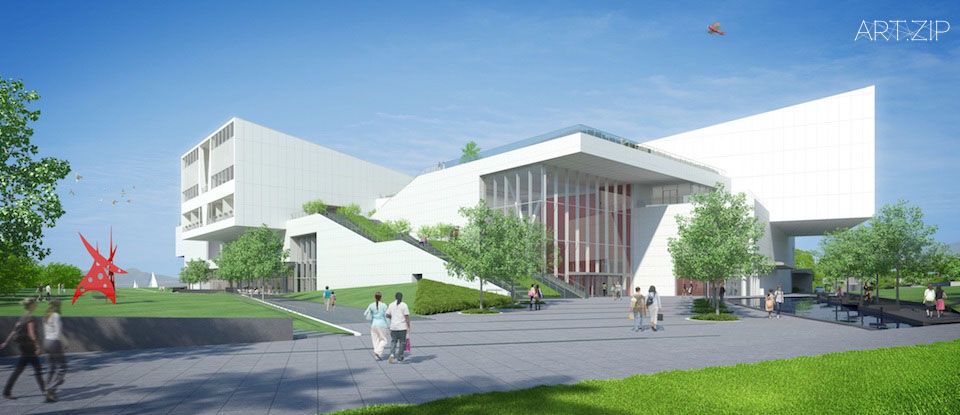
Unidentified Acts of Design 無名的設計行為
15 September – 30 November 2016
Gallery 44, The T. T. Tsui Gallery
Victoria and Albert Museum
Cromwell Road, London, SW7 2RL

